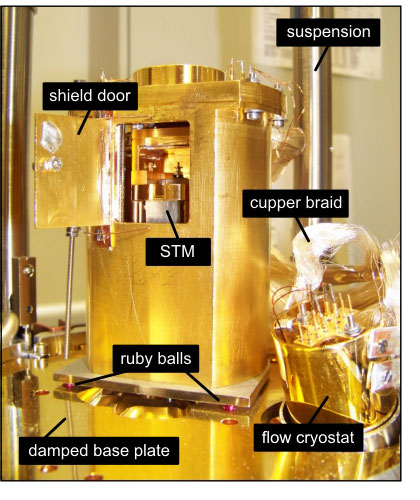Variable-Temperature Scanning Tunneling Microscopy
Fig.: A typical VT-STM setup of our group.
The STM includes a fast tip exchange mechanism and is well isolated from mechanical, acoustic or electronic noise sources. The high resonance frequency of the STM in combination with an external low resonance frequency damping stage results in an effective filter against mechanical noise. The STM is located on top of a massive damping stage and thermally decoupled by small ruby balls. Samples are mounted upside down in the sample holder, and the tip is approached from the bottom.
A diode sensor fixed to the STM body close to the sample holder measures the temperature. The whole VT-STM is cooled by a liquid He flow cryostat, and the temperature is controlled by a manual valve regulating the amount of liquid He flowing through the cryostat. To stabilize the temperature at the heat exchanger an electric heating and a PID-temperature controller are used. Oxygen-free and high-conductive copper braids provide the thermal connection between the STM and the cryostat. Their high flexibility avoids the transmission of vibrations to the STM. The lowest base temperature of approximately 18K at the sample is reached within two hours, starting at room temperature. Here, the heat exchanger reaches the final minimum temperature of 6K rather quickly, while the sample follows with some delay.

